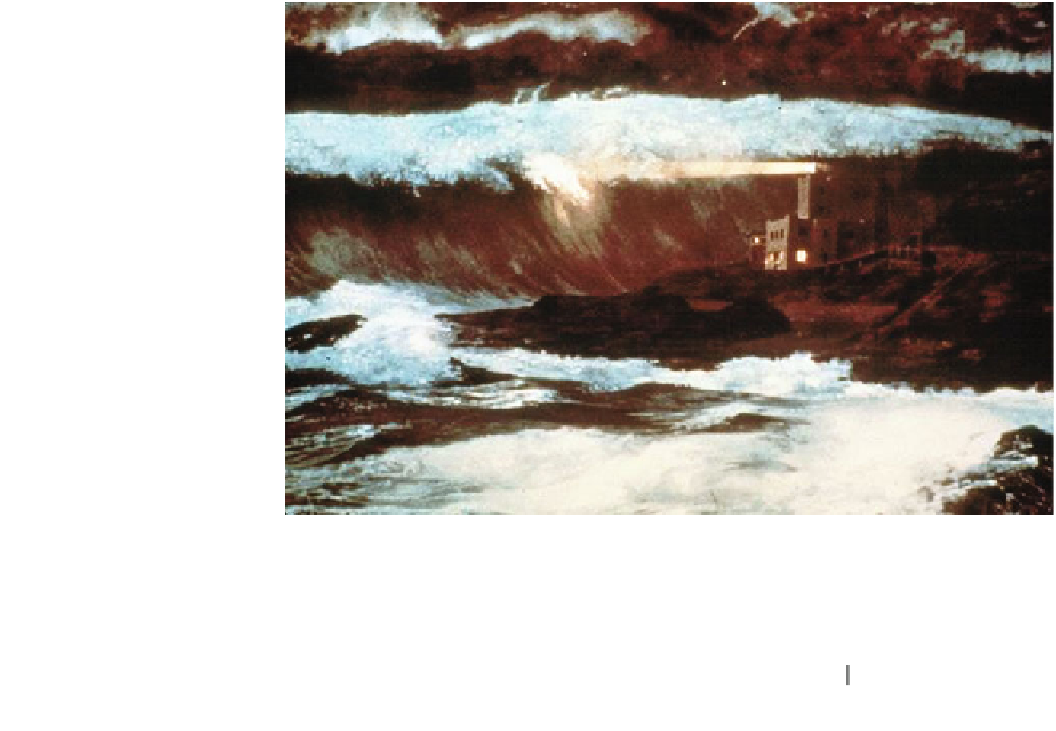Geoscience Reference
In-Depth Information
Fig. 2.1
An artist's impression
of the tsunami of April 1, 1946
approaching the five story-high
Scotch Cap lighthouse, Unimak
island, Alaska. The lighthouse,
which was 28 m high, stood on
top of a bluff 10 m above sea
level. It was completely
destroyed (see also Fig.
2.8
). The
wave ran over a cliff 32 m high
behind the lighthouse. Painting is
by Danell Millsap, commissioned
by the United States National
Weather Service
Fig. 2.2
Various terms used in
the text to express the wave
height of a tsunami
L
d
H
r
H
s
H
t
η
mean sea
level
H
H
o
Shoreline
h
Continental shelf
Open ocean
source
d
Continental slope
Seabed
In deep water, the most significant factor is the ratio H:L,
or wave steepness. In shallow water it is the ratio H:d,or
relative height. Sinusoidal waves fit within a class of waves
called cnoidal waves: c for cosine, n for an integer to label
the sequence of waves, and oidal to show that they are
sinusoidal in shape. The shape of a wave or its peakedness
can be characterized by a numerical parameter. For sinu-
soidal waves this parameter is zero. While tsunami in the
open ocean are approximately sinusoidal in shape, they
become more peaked as they cross the continental shelf. In
this case, the numerical parameter describing shape
increases and non-linear terms become important. The wave
peak sharpens while the trough flattens. These non-linear,
tepee-shaped waves are characterized mathematically by
Stokes wave theory (Komar
1998
; von Baeyer
1999
). In
Stokes theory, motion in two dimensions is described by the
sum of two sinusoidal components (Fig.
2.4
). Water parti-
cles in a Stokes wave do not follow closed orbits, and there
is mass movement of water throughout the water column as
the wave passes by a point. As a tsunami wave approaches
shore, the separation between the wave crests becomes so
large that the trough disappears and only one peak remains.
The numerical parameter characterizing shape approaches
one and the tsunami wave becomes a solitary wave
(Fig.
2.4
). Solitary waves are translatory in that water
moves with the crest. All of the waveform also lies above
mean sea level. Finally, it has been noted that a trough that
is nearly as deep as the crest is high precedes many
exceptional tsunami waves. This gives the incoming wave a
wall effect. The Great Wave of Kanagawa shown on the
frontispiece of this topic is of this type. These waves are not
solitary because they have a component below mean sea
level. Such waveforms are better characterized by N-waves.
This chapter uses features of each of these wave types:
sinusoidal, Stokes, solitary, and N-waves to characterize
tsunami.

























































